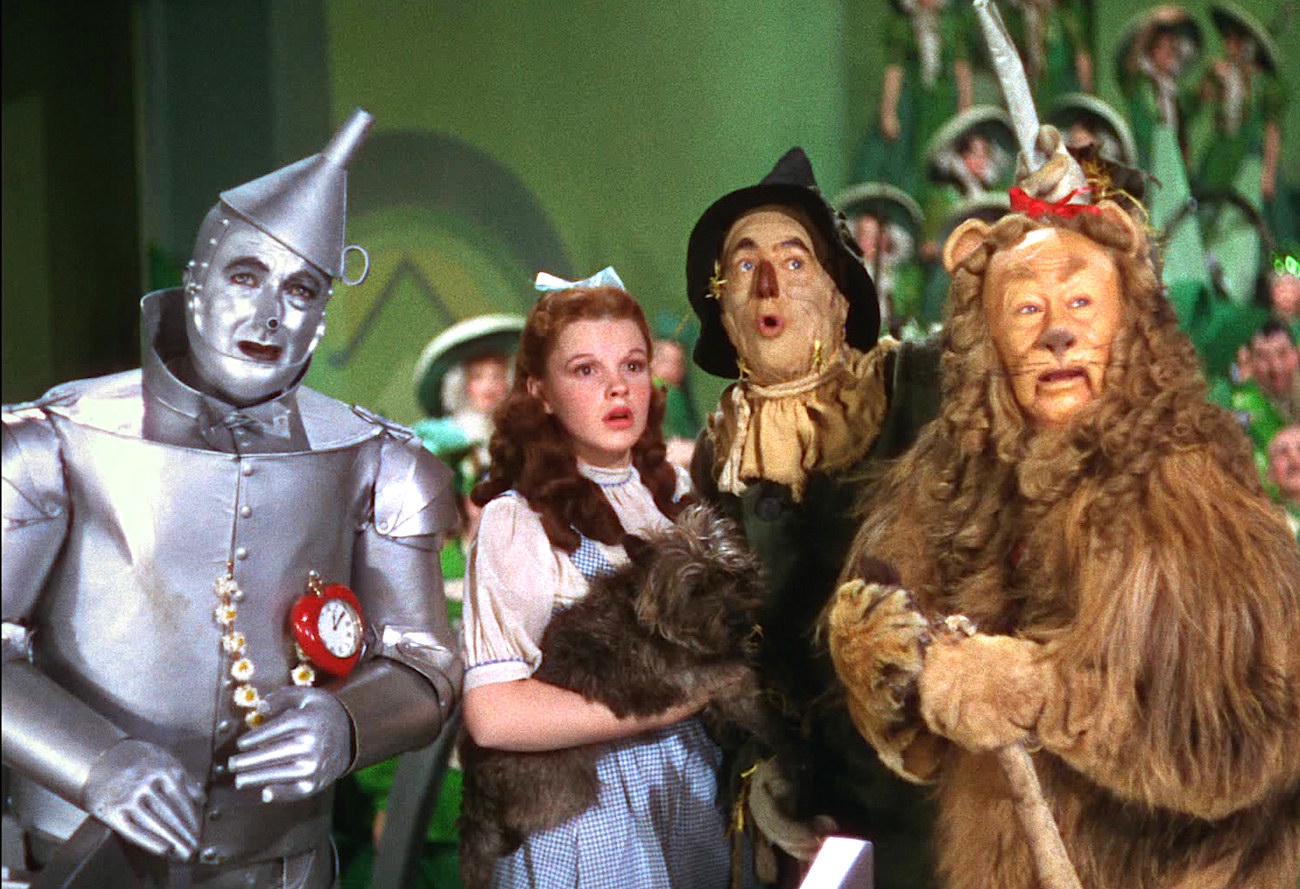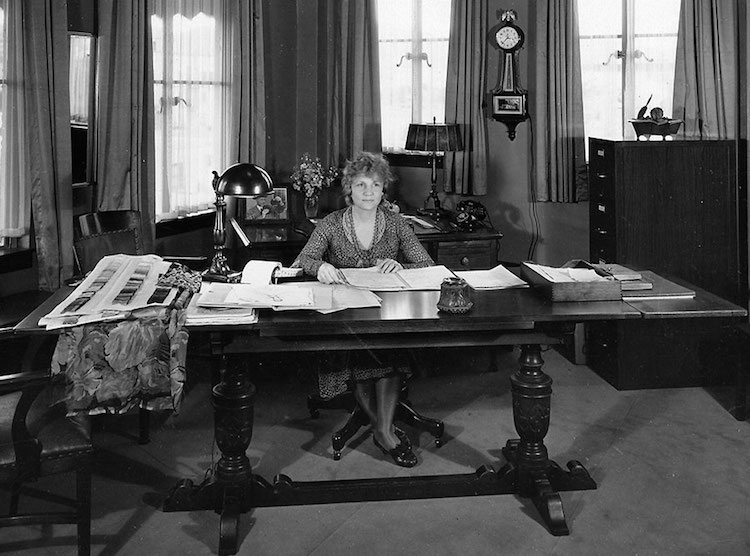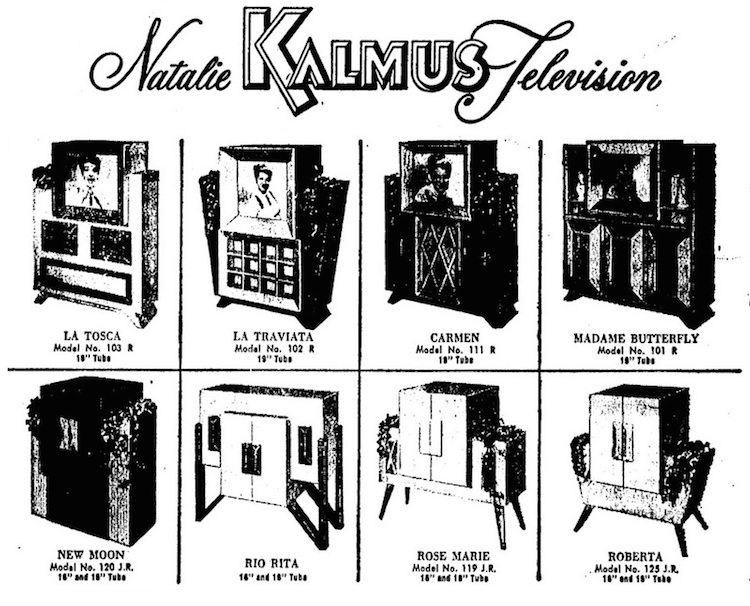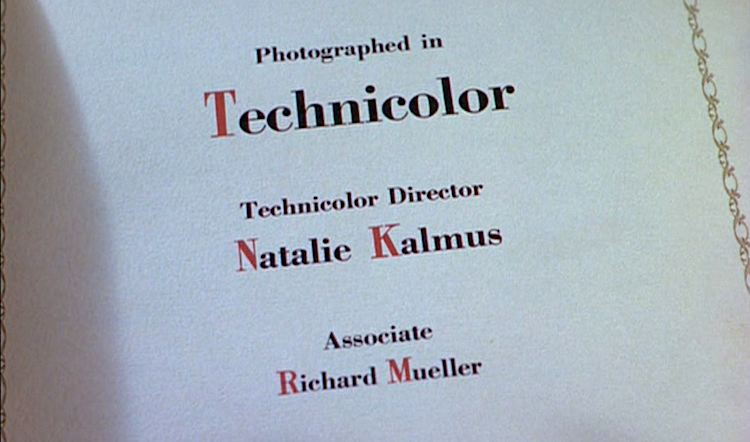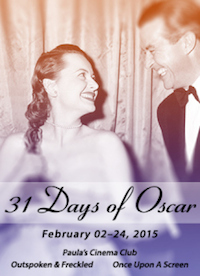 This post is part of the third annual 31 Days of Oscar Blogathon hosted by three classic movie bloggers: Kellee Pratt (@IrishJayHawk66) of Outspoken & Frecked, Aurora (@CitizenScreen) of Once Upon a Screen, and Paula Guthat (@Paula_Guthat) of Paula’s Cinema Club. The blogathon was started as an adjunct to Turner Classic Movies’ 31 Days of Oscar marathon during which TCM shines a spotlight on the hits and misses of the Academy Awards. Kellee, Aurora, and Paula will be focusing on a different aspect of the Oscars each week in February. This week’s focus is the talented behind-the-scenes craftspeople of Hollywood.
This post is part of the third annual 31 Days of Oscar Blogathon hosted by three classic movie bloggers: Kellee Pratt (@IrishJayHawk66) of Outspoken & Frecked, Aurora (@CitizenScreen) of Once Upon a Screen, and Paula Guthat (@Paula_Guthat) of Paula’s Cinema Club. The blogathon was started as an adjunct to Turner Classic Movies’ 31 Days of Oscar marathon during which TCM shines a spotlight on the hits and misses of the Academy Awards. Kellee, Aurora, and Paula will be focusing on a different aspect of the Oscars each week in February. This week’s focus is the talented behind-the-scenes craftspeople of Hollywood.
There’s one woman in Hollywood who may have been involved in more Oscar-winning films than anyone else in the history of the movies. You probably know very little about her, but her name was featured prominently in the credits for literally hundreds of films during the 1930s and 40s. I’m not talking about obscure films, either, this woman was intimately involved in the production of many A-list classics including The Wizard of Oz and Gone With the Wind. Can you guess who I’m talking about? I’ll give you a hint by mentioning a few of the other films in her credits. See if you can figure out the common link between them: the 1937 version of A Star Is Born, Marlene Dietrich’s campy Garden of Allah, Shirley Temple’s The Little Princess, The Private Lives of Elizabeth and Essex starring Bette Davis and Errol Flynn, John Ford’s Drums Along the Mohawk, Northwest Passage with Spencer Tracy, Vincente Minnelli’s Meet Me in St. Louis starring Judy Garland, National Velvet” with Elizabeth Taylor and Mickey Rooney, and the June Allyson/Margaret O’Brien version of Little Women. Got it? What do all these movies have in common besides stellar casts and superb direction? I’ll give you one last hint—she also worked on The Red Shoes, The Boy with Green Hair, and She Wore a Yellow Ribbon. That’s right. These were all movies made in brilliant three-strip Technicolor.
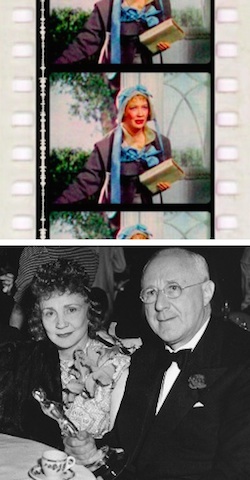 In 1902, Natalie Dunfee married Herbert T. Kalmus, a physics student at MIT. Over the next ten years, the couple moved to Berlin, Zurich, and then back to Boston. Natalie studied art while her husband began experimenting in their basement with the newfangled notion of color film. Up until that time, of course, all films were in black and white except for some hand-colored sequences that were very expensive to produce and not that effective. Using her art background, Natalie helped her husband with his project. In 1915, they formed the Technicolor Motion Picture Corporation. A few films were filmed before 1920 using Kalmus’s two-strip Technicolor process but these were difficult to make and project and the company lost a lot of money. They stuck with it, though, and ten years later Herbert and his partners devised a much more successful process where three separate strips of film were used to record color. Unfortunately, the Kalmus’s marriage had collapsed by then but for whatever reason, Herbert and Natlie kept their divorce a secret and continued to live together. In 1927 they moved to Hollywood to try to sell Technicolor to the studios. The first full-length film to be shot in Technicolor was the costume drama Becky Sharp in 1935. It was the best use of color up until that time but they hadn’t yet worked out all the kinks. One critic at the time said that the actors in Becky Sharp looked like “boiled salmon dipped in mayonnaise.” But the process would continue to improve and Herbert and Natalie would even be honored with an honorary Oscar for their contributions at the 1939 Academy Awards presentation.
In 1902, Natalie Dunfee married Herbert T. Kalmus, a physics student at MIT. Over the next ten years, the couple moved to Berlin, Zurich, and then back to Boston. Natalie studied art while her husband began experimenting in their basement with the newfangled notion of color film. Up until that time, of course, all films were in black and white except for some hand-colored sequences that were very expensive to produce and not that effective. Using her art background, Natalie helped her husband with his project. In 1915, they formed the Technicolor Motion Picture Corporation. A few films were filmed before 1920 using Kalmus’s two-strip Technicolor process but these were difficult to make and project and the company lost a lot of money. They stuck with it, though, and ten years later Herbert and his partners devised a much more successful process where three separate strips of film were used to record color. Unfortunately, the Kalmus’s marriage had collapsed by then but for whatever reason, Herbert and Natlie kept their divorce a secret and continued to live together. In 1927 they moved to Hollywood to try to sell Technicolor to the studios. The first full-length film to be shot in Technicolor was the costume drama Becky Sharp in 1935. It was the best use of color up until that time but they hadn’t yet worked out all the kinks. One critic at the time said that the actors in Becky Sharp looked like “boiled salmon dipped in mayonnaise.” But the process would continue to improve and Herbert and Natalie would even be honored with an honorary Oscar for their contributions at the 1939 Academy Awards presentation.
From the beginning, Natalie sold herself as the “color consultant” for the tricky Technicolor cameras and as part of the contract with Technicolor, the studios were obligated to hire her for every film that used the process. Herbert Kalmus continued perfecting his invention and just a few years later the Technicolor cameras were photographing some of the most vivid and gorgeous colors ever seen on celluloid.
My personal favorite from this era is The Adventures of Robin Hood starring Errol Flynn and Olivia de Havilland. This film epitomizes the glory of early Technicolor with breathtaking, almost surrealistic hues. I’d like to give Natalie Kalmus all the credit for this exquisite use of Technicolor, but it turns out she was a constant thorn in the side of director Michael Curtiz since she kept insisting he tone down the color palette used in the film. She constantly railed against a “super-abundance of color” and warned the director that the colors he was using would make the film look like a comic book. “But Natalie, that’s what we’re going for,” he replied.
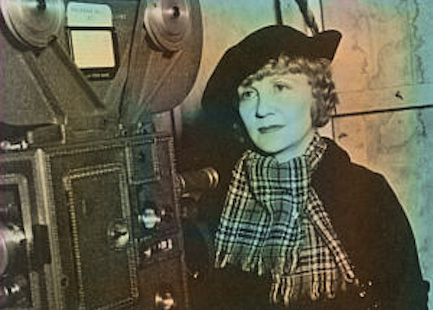 While she clearly had expertise in the area of color, Kalmus did not always ingratiate herself to the creative community in Hollywood. Part of it was surely that the all-powerful directors couldn’t handle the fact that they were supposed to take advice from this woman. According to one reporter writing about Technicolor in the 1940s, “It seems to many of them that she is too interfering, too insistent on things being done the way she wants, and determined not to allow experiments to be made.”
While she clearly had expertise in the area of color, Kalmus did not always ingratiate herself to the creative community in Hollywood. Part of it was surely that the all-powerful directors couldn’t handle the fact that they were supposed to take advice from this woman. According to one reporter writing about Technicolor in the 1940s, “It seems to many of them that she is too interfering, too insistent on things being done the way she wants, and determined not to allow experiments to be made.”
“Natalie Kalmus was a bitch,” movie pioneer Allen Dwan said bluntly in a 1980 interview. But he also added that many people complained about color in the early days. They said it hurt their eyes. The Technicolor cameras were so unwieldly and the process so tricky that it made sense to have consultants from the company that would help the filmmakers get what they wanted. The problem is, the talented folks in Hollywood soon caught up with the challenges of Technicolor and yet Natalie was still around telling them what they could and couldn’t do.
 Producer David O. Selznick had already worked with Technicolor by the time he made Gone With the Wind and he had zero patience for Natalie Kalmus’s interference. “The Technicolor experts have been up to their old tricks of putting all sorts of obstacles in the way of real beauty,” he wrote in one of his famous memos. “If we are going to listen to the Technicolor experts, we might as well do away entirely with the artists that are in our own set and costume departments and let the Technicolor company design the picture for us.” Kalmus tried to have her way with Selznick but he resisted at every turn. The final straw came one day when Natalie insisted that the wallpaper in Scarlett O’Hara’s bedroom set wouldn’t work in color. Selznick used all his influence and forced Technicolor to send Natalie to England to work at the company’s English headquarters for the duration of the film. But she still got a credit on Gone With the Wind.
Producer David O. Selznick had already worked with Technicolor by the time he made Gone With the Wind and he had zero patience for Natalie Kalmus’s interference. “The Technicolor experts have been up to their old tricks of putting all sorts of obstacles in the way of real beauty,” he wrote in one of his famous memos. “If we are going to listen to the Technicolor experts, we might as well do away entirely with the artists that are in our own set and costume departments and let the Technicolor company design the picture for us.” Kalmus tried to have her way with Selznick but he resisted at every turn. The final straw came one day when Natalie insisted that the wallpaper in Scarlett O’Hara’s bedroom set wouldn’t work in color. Selznick used all his influence and forced Technicolor to send Natalie to England to work at the company’s English headquarters for the duration of the film. But she still got a credit on Gone With the Wind.
![]()
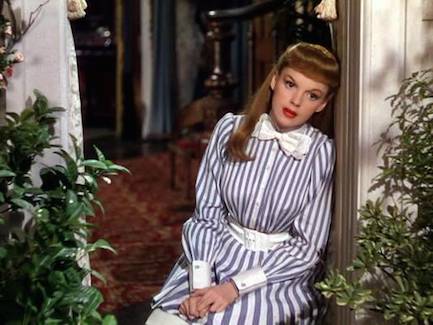 Vincente Minnelli was a master visual stylist in his own right, and he clashed horribly with Kalmus on the set of Meet Me in St. Louis. “My juxtaposition of color had been highly praised on the stage, but I couldn’t do anything right in Mrs. Kalmus’s eyes,” Minnelli wrote in his autobiography. After Natalie interrupted the shooting of the Christmas dance with the edict, “You can’t have one sister in a bright red gown and another in bright green,” he just rolled his eyes and ignored her. “I depended on my own instincts from then on,” he wrote.
Vincente Minnelli was a master visual stylist in his own right, and he clashed horribly with Kalmus on the set of Meet Me in St. Louis. “My juxtaposition of color had been highly praised on the stage, but I couldn’t do anything right in Mrs. Kalmus’s eyes,” Minnelli wrote in his autobiography. After Natalie interrupted the shooting of the Christmas dance with the edict, “You can’t have one sister in a bright red gown and another in bright green,” he just rolled his eyes and ignored her. “I depended on my own instincts from then on,” he wrote.
Besides alienating directors and studio art departments left and right, poor Natalie’s personal life was imploding faster than Scarlett O’Hara’s. When she found out that her ex-husband Herbert was planning to remarry, she launched a public campaign of vilification to get more money out of him. She admitted to their 1921 divorce but then claimed that they had secretly remarried in 1923 and were still legally wed. In 1948 Natalie was still pulling in a $32,000 yearly salary from Technicolor. She received an additional $7,500 a year in alimony and a monthly stipend of $675. Not bad. But she claimed she needed $3,000 a month from Herbert to live properly.
The judge had little sympathy for Kalmus’s plight, especially since she was never able to produce proof that she and Herbert were still married. Natalie claimed that her husband was guilty of cruelty, desertion, and infidelity, and that she deserved half of his $3,000,000 estate. Her complaints got more dramatic with every passing week and the papers ate it up. She claimed that Herbert predicted that he’d one day “see her crawling in the gutter begging for food.” She named at least five women she said he was carrying on with while pleading with the court to recognize her as Kalmus’s legal wife. They wouldn’t, and Natalie went ballistic, carrying on in court, claiming the case had given her a heart attack, and exhibiting frequent histrionics. Herbert soon went on the defensive, publicly stating that his ex-wife had repeatedly threatened to ruin his business. “She called me a stinker, a liar, and a crook, and she insulted the women I had a perfect right to entertain. She continually threatened to murder me. She said she would shoot me in a dark alley.”
After another appeal was rejected, Natalie lost it in court. “I can’t stand it!” she sobbed to the judge. “Oh, God! Oh, God! Won’t any court dare to give me justice?” She continued fighting the court’s decision for several years and kept losing case after case. In 1954 she was back in court when her lawyer, Paul Loewenthal, sued his former client for $250,000 in unpaid attorney fees. Poor Natalie could not catch a break. Things got even worse for the one-time Technicolor maven when she wrote a nasty letter to her judge in the Loewenthal case and he cited her for contempt of court, sentencing the 73-year-old woman to five days in the county jail. “You can get neither justice nor sympathy in these courts,” she cried. “I’d like to go to jail so I can publicize the injustice that has been done to me.” “You’ve had justice,” the angry judge roared in response. “You won’t believe me. You won’t believe your own attorneys. You won’t believe the District Court of Appeals, so I will have to take heroic measures.”
What a saga. Does it sound like I’m joining the anti-Natalie pack? I’m not, really. Some people have suggested that Natalie’s entire role in Technicolor was bogus, that she was just Herbert’s albatross and he insisted she be hired on every Technicolor film just to get her off his back. I don’t think that’s true. I recently went to the research library at the Motion Picture Academy and read through a bunch of material Kalmus wrote in the 1930s about the use of color in film. I believe the woman did have expertise to offer in this area but unfortunately had other problems that prevented her form being flexible or changing with the times as the creative talents in Hollywood figured out how to use Technicolor to its best advantage. I understand why the directors in the 30s and 40s came to dread Kalmus’s interference but I’m sure they also had their own biases against women in any position of power. Early on, Natalie served as the cinematographer on several films with the clumsy Technicolor cameras and did a great job. It would be many decades before another woman assumed that role.
Following her series of lawsuits, Natalie Kalmus was summarily dismissed from all Technicolor activities. She then dabbled in designing wallpaper, furniture, and for a few years in the early 1950s, a collection of strange and beautiful television sets made out of fine wood with names like La Traviata, Rio Rita, and Madame Butterfly. She even produced a short-lived TV series starring Gloria Swanson.
Sadly, Kalmus soon slipped into obscurity and wasn’t heard from again until she was spotted at the age of 85 in a hospital near Boston. A 1964 article in Variety described Natalie’s birthday celebration in the hospital as a sad affair “with no one on hand to share her birthday cake except the corps of sympathetic nurses who presented it to her.” Kalmus reportedly “wept tears of joy” when the cake was wheeled in. “There were no cards, no messages, no calls from her many friends and onetime associates in the film business.” She died a year later.
So where’s the big studio biopic about poor forgotten Natalie Kalmus? Come on, Hollywood, the story has everything: young love gone bad, innovation that affected the entire movie industry, a secret divorce, daily encounters with the most brilliant artists in motion pictures, a series of salacious trials, and a once powerful woman tossed out onto the junk heap. I can see Kate Winslet masterfully playing Kalmus from her marriage in 1902 to her death in 1965. What a great Oscar-winning “comeback” it could be for the long-suffering Kalmus! Natalie herself supplied the perfect title for such a film. She once told a reporter that in her work with Technicolor, she was playing “Ringmaster to the Rainbow.”

